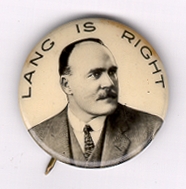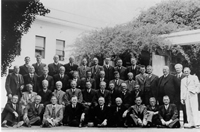
Prelude to 1937
When Curtin first entered the House of Representatives in 1928 as member for Fremantle the non-Labor parties led first by ex-Laborite William Morris Hughes and then Stanley Melbourne Bruce had been in power for eleven years. Including Curtin’s victory in Fremantle the federal Labor party won eight additional House seats in 1928 leaving the party in a minority of 31 to 43 seats with one Independent. A year later the non-Labor Bruce–Page Government was forced back to the polls following a defeat in the House of Representatives and Labor led by Scullin won the election with a majority of 46 to 28 with Prime Minister Bruce himself one of the electoral casualties in his own Victorian seat of Flinders. However, just over two years later in November 1931 members of the breakaway Lang Labor party backed a United Australia Party no confidence motion and forced the Scullin Government to the polls where it suffered a disastrous defeat winning only 14 Lower House seats in the new Parliament and in New South Wales only 3 of the 28 seats compared with 4 for the breakaway Lang Labor forces. Among the prominent casualties of the election were the Treasurer and former Queensland Premier Edward Theodore, defeated by a Lang Labor candidate in his New South Wales seat; Ben Chifley; and Curtin himself who was defeated in Fremantle by the former member William Watson. In the Senate contest Labor won only three of the eighteen vacancies, all in Queensland.

